What Is Kinetic Sand? How It Works and Where It’s Used
-
Pete Ortiz
- Last updated:
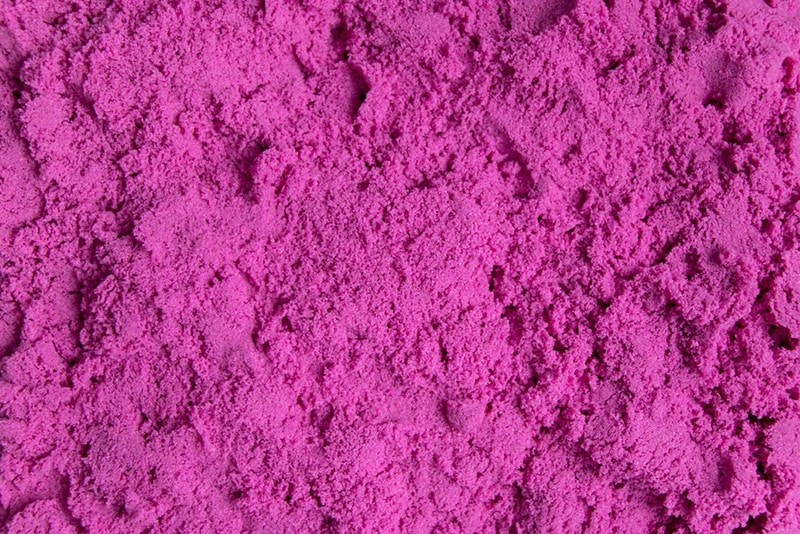
Kinetic sand is not your typical sand, as it comes with uniquely artificial properties. For instance, unlike regular sand, kinetic sand always seems wet for no reason and doesn’t dry out.
The other standout property is its ability to not stick to anything nearby—or the things that it comes into contact with—other than itself. These two properties make it the ideal malleable material for kids looking to mold differently shaped objects, and STEM students trying to design miniature models of various items.
To understand what kinetic sand really is, we have to talk about the science behind it. So, read on below to find out more.
How Does Kinetic Sand Work?
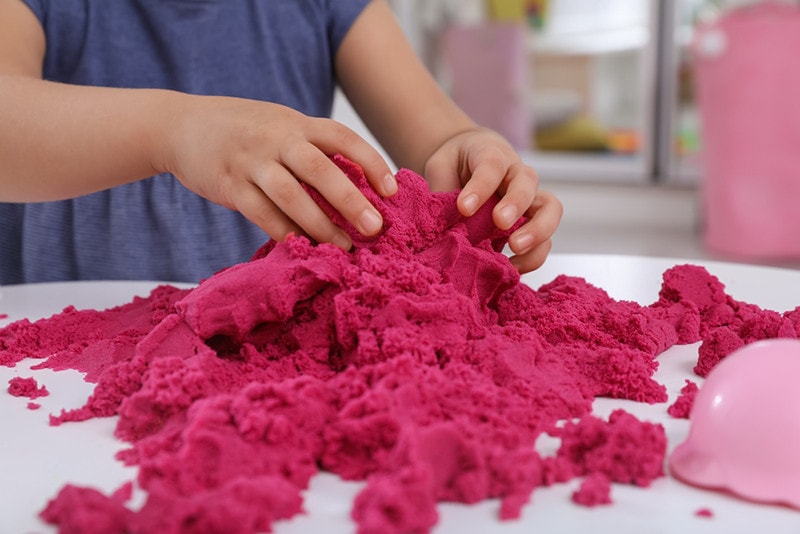
Layman’s Explanation
Even though it doesn’t have the same appearance or texture as traditional sand, kinetic sand is actually sand. The only difference is that instead of being coated using water to make it wet, it uses silicone oil.
As most of you probably know, silicon oil is a versatile product. Besides being used as a lubricant, it can also be utilized as a heat transfer oil or hydraulic fluid. Kinetic sand is always wet due to silicon oil. Had they used water instead of oil, it would have dried out in a matter of seconds.
The oil is also the reason why, when left alone, this sand reverts to a more natural shape. For example, if you made a ball, and left the ball on a flat surface for an extended period of time, you’ll come back to find it flattened out—even if no form of force was exerted on it.
Scientific Explanation
From a scientific standpoint, kinetic sand is primarily sand, with 2% of its composition being polydimethylsiloxane (PDMS). The PDMS compound is quite honestly what gives this material that wet appearance, and also helps it to stay bonded to itself.
PDMS is essentially a liquid polymerized siloxane compound that’s usually classified as a variant of silicone oil. When broken down into simpler blocks, you get to learn that PDMS is basically a mineral-organic polymer.
By definition, a polymer is any synthetic or natural substance that’s made up of macromolecules—and the macromolecules can still be broken down further into monomers. In our case, PDMS is the polymer, while carbon and silicon are the monomers.
Typical of silicone oil, PDMS doesn’t catch fire easily, is not poisonous, and is considered chemically stable. In addition, it’s usually optically clear and exudes viscoelasticity. We like to use the term “viscoelastic” to describe any material or substance that acts like a viscous liquid when the temperature levels are ramped up and appears to have the elasticity of rubber when the temperatures drop.
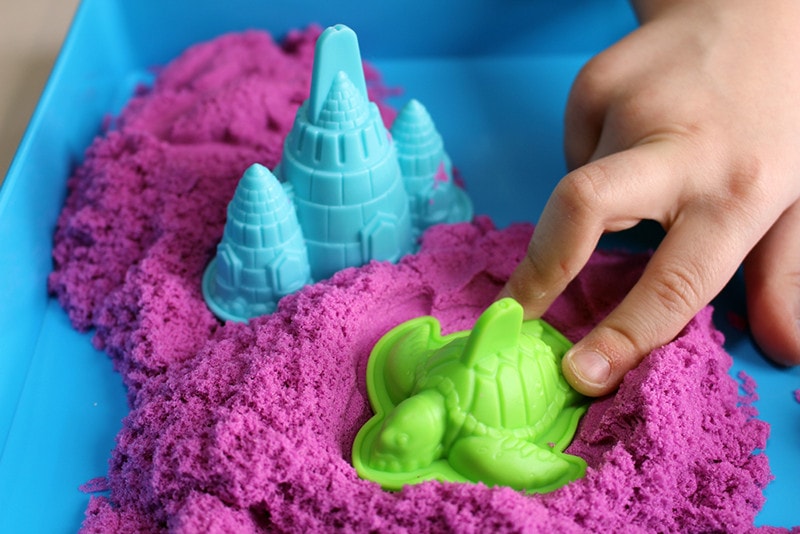
Why is kinetic sand hydrophobic?
That’s the effect of the PDMS. The oil’s molecules are naturally nonpolar, thus repelled by the water molecules’ polarity. Any surface that’s covered with PDMS automatically becomes “water-fearing”. This property is also the answer to why kinetic sand doesn’t stick to anything in its vicinity, even if they come into contact.
Where Is Kinetic Sand Used?
Toys
Kinetic sand is mostly used as a toddler’s toy. We’re often advised to encourage our young ones to mold as often as possible because this practice helps them develop fine motor skills. While playing with sand, molding it into different shapes, the muscles in their hands gradually develop. Thus, making it easier for them to comfortably hold things like pencils in the future or use scissors.
The process of flattening, rolling, and squishing this type of sand also produces a calming effect that kids use as an avenue to release excess energy or reduce stress. Encouraging creativity is another benefit that we can’t discount, seeing as creating different objects often allows toddlers to stretch their imaginations.
What’s more, manipulating the material to fit a certain idea makes us believe that kinetic sand is again instrumental in helping kids improve their hand-eye coordination.

Sand Tray Therapy
In psychology, we have various counseling techniques that are thought to be more expressive in nature. And sand tray therapy—sometimes referred to as “sand play”—happens to be one of them.
This psychological approach employs the utilization of miniatures or figurines in various aspects, to help patients effectively express whatever they are feeling or how they view the world. They are usually asked by a therapist or psychologist to create scenes in a sand tray that would accurately describe their emotions, hardships, and thoughts, at the present moment and in the past.
For this technique to work, it has to be applied in a clinical setting. And although it can be useful in a group setting, it won’t be as effective as it would have been on a one-on-one basis. Also, sand tray therapy applies to people of all ages.
In the past, this therapy majorly relied on traditional sand, water, and a few other tools that would make the molding process easier for the patient.
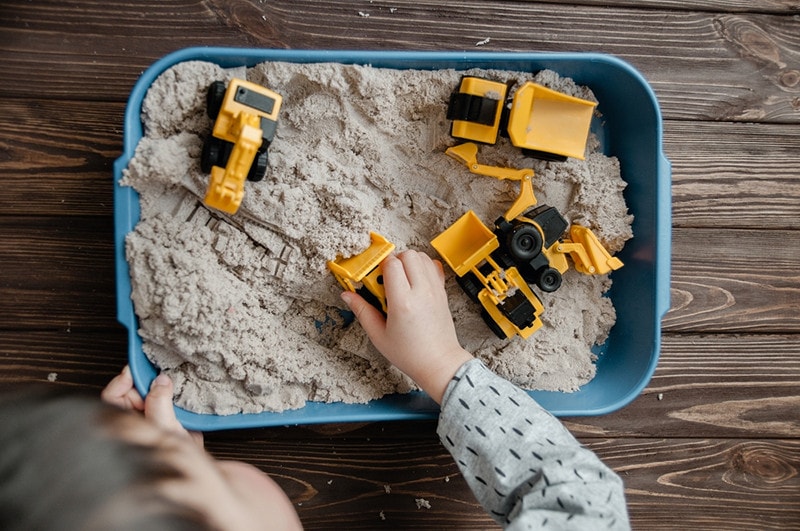
ASMR
The soothing effects of kinetic sand have made it popular among adults who like to trigger the Autonomous Sensory Meridian Response. Commonly known as ASMR, this response is exhibited in the form of a tingling sensation that can be felt around the shoulder, neck, or scalp. According to various findings, more often than not, it’s triggered by gentle taps or whispers. But it recently came to our attention that kinetic sand can be manipulated to generate a similar effect.
- It’s hydrophobic
- Easily moldable
- Easy to clean
- Affordable
- Triggers ASMR
- Comes in a variety of colors
- Ideal for sand tray therapy
- It serves as a durable toy
- Doesn’t stick to things
- Toddlers can inadvertently swallow some in the absence of supervision
Frequently Asked Questions (FAQs)
Can You Make Kinetic Sand at Home?
Yes, if you’re desperately yearning for that sensory play, you can easily make a DIY kinetic sand at home. All you’ll need is sand, cornstarch, and oil, which are to be mixed in a ratio of 5:3:1, respectively. Any sand variety can get the job done, but we like working with colored decorator sands for a more fun experience.
Flour can be used as a substitute for cornstarch, but the end product will slightly vary. That’s usually the case because the latter ingredient is so silky. If you can’t find silicone oil, use mineral oil, baby oil, or cooking oil.
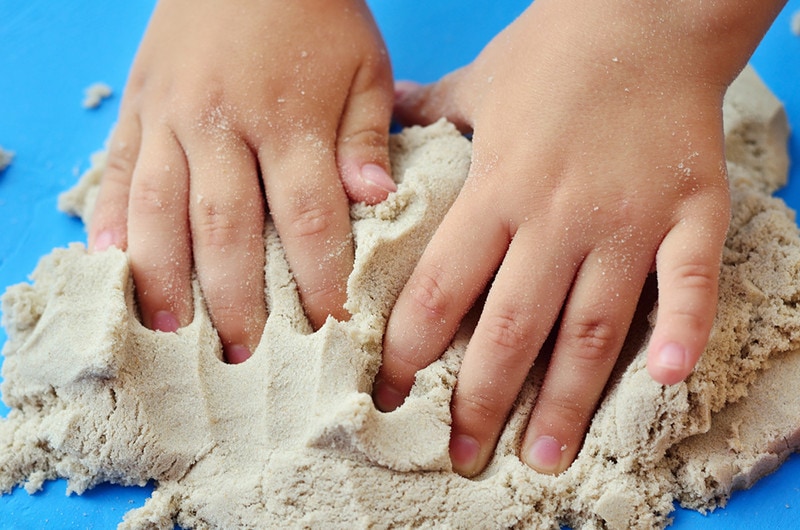
How Do You Clean Up Kinetic Sand?
You can use a vacuum to get rid of the tiny particles left behind, but the easiest way to get rid of them is to mold a ball and then use it to collect them all. When you dab the ball on the remnants, even if they are on a carpet, they’ll stick to it without showing any form of resistance. With kinetic sand, you don’t have to use water or a cleaning solution—unless you want to.
What’s The Best Way to Dispose of Kinetic Sand?
Do not make the mistake of trying to flush it down the toilet or drain. Kinetic sand is a reusable product, but if you don’t have any use for it, take it to the trash. The garbage collectors will know how to safely dispose of it.
Conclusion
Kinetic sand is still considered a relatively new invention. We honestly don’t know when exactly it was invented, but Spin Master Ltd is considered the brains behind it. They trademarked it as a kid’s toy in January 2014, promising to bring that beach-like sand experience to our homes.
Besides helping toddlers improve their motor skills, it’s also instrumental in helping adults express their inner thoughts and feelings in therapy—and to trigger ASMR.
Featured Image Credit: Elena Khairullina, Shutterstock
Contents


